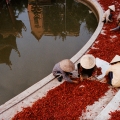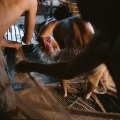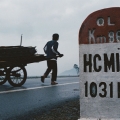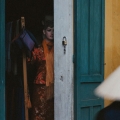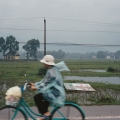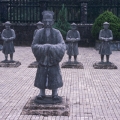Route Mandarine, VIETNAM
« La Route Coloniale n°1 ne fut longtemps qu’une grande voie mal pavée, en bordure du chemin de fer » écrivait en 1923 Roland Dorgelès dans son récit de voyage Sur la route Mandarine. Ainsi baptisée car elle fut la voie reliant Huê, l’ancienne capitale de l’Annam à Hanoï et Saigon qu’empruntaient les mandarins, mandataires du roi, chargés de soumettre le peuple. Longue de mille sept cents kilomètres, elle n’était qu’une simple piste tracée durant la dynastie des Nguyen par l’empereur Gia Long avant d’être aménagée lors de la colonisation française. De Hanoï à Saigon, du delta du Fleuve Rouge au delta du Mékong, le seul nom de cette Route mythique évoque les splendeurs de l’Orient, la magnificence du Vietnam et l’infinie diversité d’un pays.
For many years, “Route Coloniale n°1 was nothing more than a badly paved road running alongside the railway track”, wrote Roland Dorgelès in 1923, in Sur la Route Mandarine. The road was thus named as it linked Huê, the former capital of Annam, to Hanoi and Saigon, the route taken by the mandarins, sent by the king to subdue the people. Before being developed by the French colonisers, it was no more than a track, 1,700 kilometres long, traced by Emperor Gia Long during the Nguyen dynasty. From Hanoi to Saigon, from the delta of the Red River to that of the Mekong, the name of this mythical road evokes the splendours of the Orient, the magnificence of Vietnam and the infinite diversity of the country.




